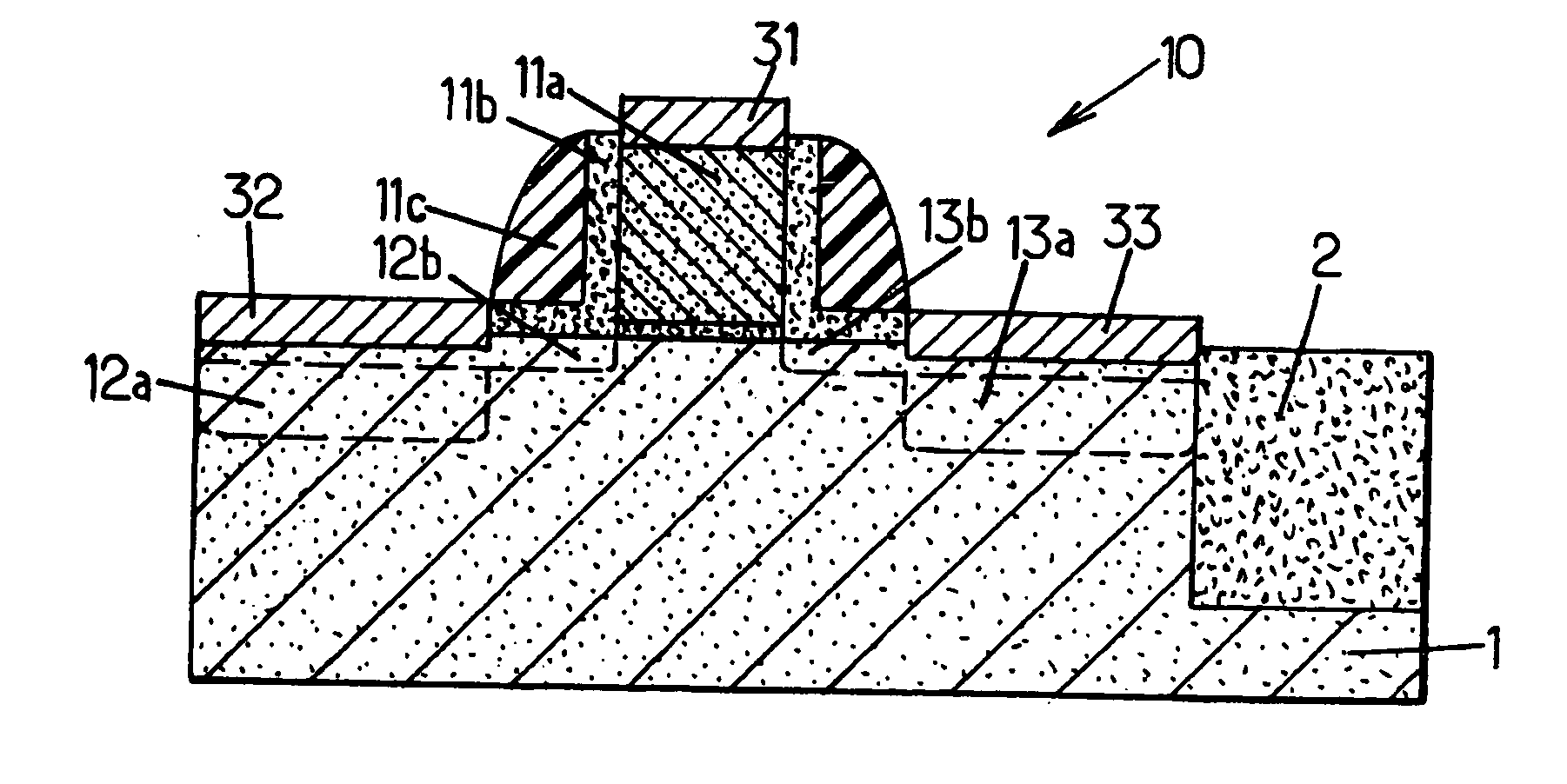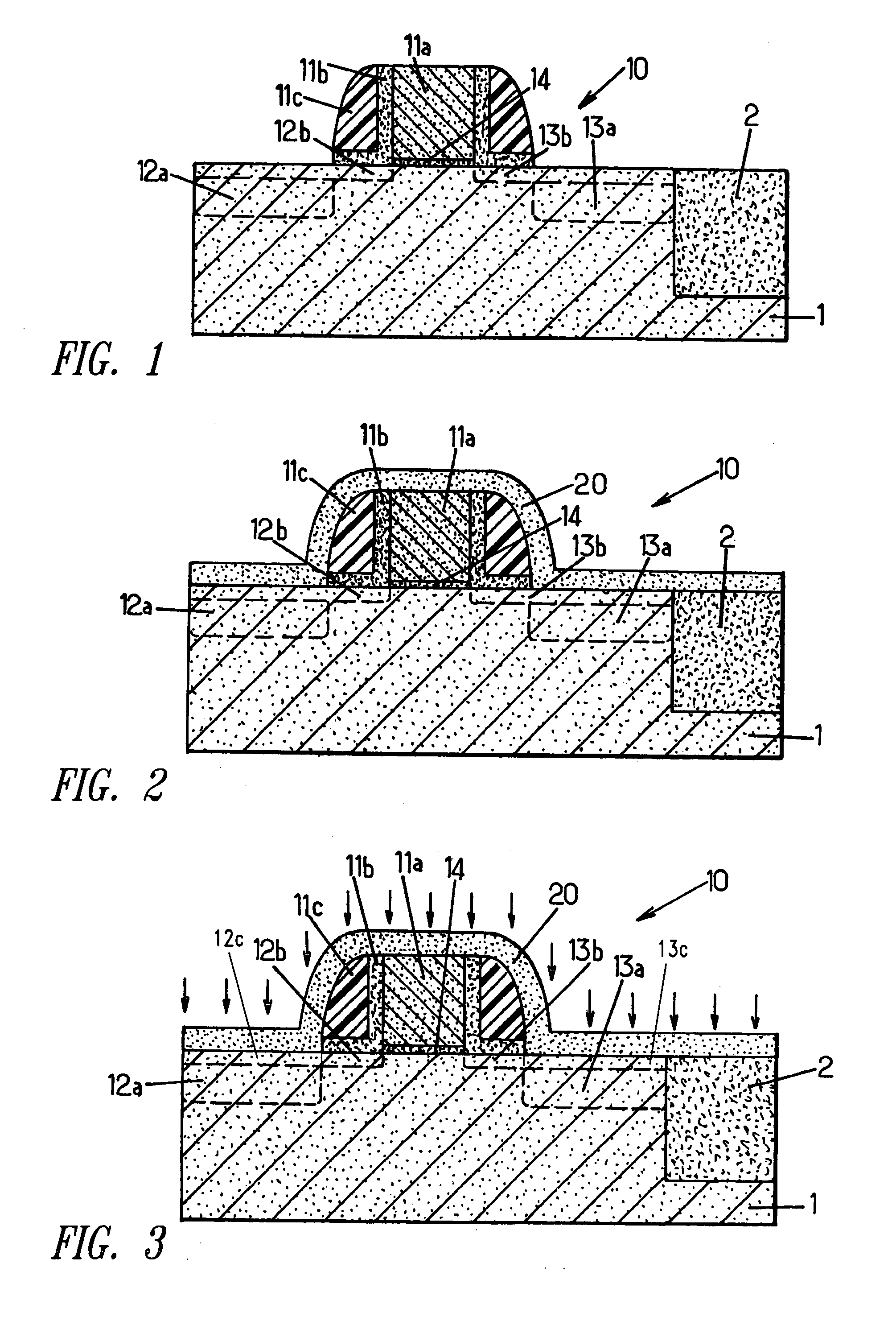Method for the formation of silicides
a technology of silicide and silicide, which is applied in the field of semiconductor device fabrication, can solve the problems of affecting the quality of these devices, short circuit between the gate and the source and/or drain active regions, and junction leakage, so as to reduce the resistance of the layer, the effect of limiting the channeling of ions
- Summary
- Abstract
- Description
- Claims
- Application Information
AI Technical Summary
Benefits of technology
Problems solved by technology
Method used
Image
Examples
Embodiment Construction
[0033] In the drawings, identical elements bear the same references. Each figure shows a sectional view of a transistor 10, which is an MOS transistor produced on the surface of a semiconductor wafer, forming a silicon substrate 1.
[0034] The diagram in FIG. 1 shows the transistor 10 before the start of the siliciding process according to the invention.
[0035] The gate of the transistor 10 comprises a polycrystalline silicon (polysilicon) layer 11 a or an amorphous silicon layer used as main conducting layer. The layer 11 a is attached to the surface of the substrate 1, from which it is isolated by a thin gate oxide layer 14, for example made of silicon dioxide (SiO2). The main conducting layer 11a and the layer of insulation 14 are surrounded by a nitride layer 11b lying perpendicular to the surface of the substrate 1. The layer 11b also includes a part lying parallel to the surface of the substrate 1, extending away from the layers 11a and 14. The nitride may be silicon nitride (S...
PUM
| Property | Measurement | Unit |
|---|---|---|
| thickness | aaaaa | aaaaa |
| dielectric | aaaaa | aaaaa |
| electrical performance | aaaaa | aaaaa |
Abstract
Description
Claims
Application Information
 Login to View More
Login to View More - R&D
- Intellectual Property
- Life Sciences
- Materials
- Tech Scout
- Unparalleled Data Quality
- Higher Quality Content
- 60% Fewer Hallucinations
Browse by: Latest US Patents, China's latest patents, Technical Efficacy Thesaurus, Application Domain, Technology Topic, Popular Technical Reports.
© 2025 PatSnap. All rights reserved.Legal|Privacy policy|Modern Slavery Act Transparency Statement|Sitemap|About US| Contact US: help@patsnap.com



